The Mediterranean diet, celebrated for its health benefits, traditionally consists of plenty of fruits, vegetables, lean proteins, and whole grains. However, for individuals with celiac disease or gluten sensitivity, incorporating gluten-free options without compromising on the nutritional value can be a challenge. The introduction of New World foods—those originating from the Americas such as quinoa, amaranth, and certain varieties of corn—into gluten-free Mediterranean diets offers a wider range of nutrients and variety while still adhering to dietary restrictions.
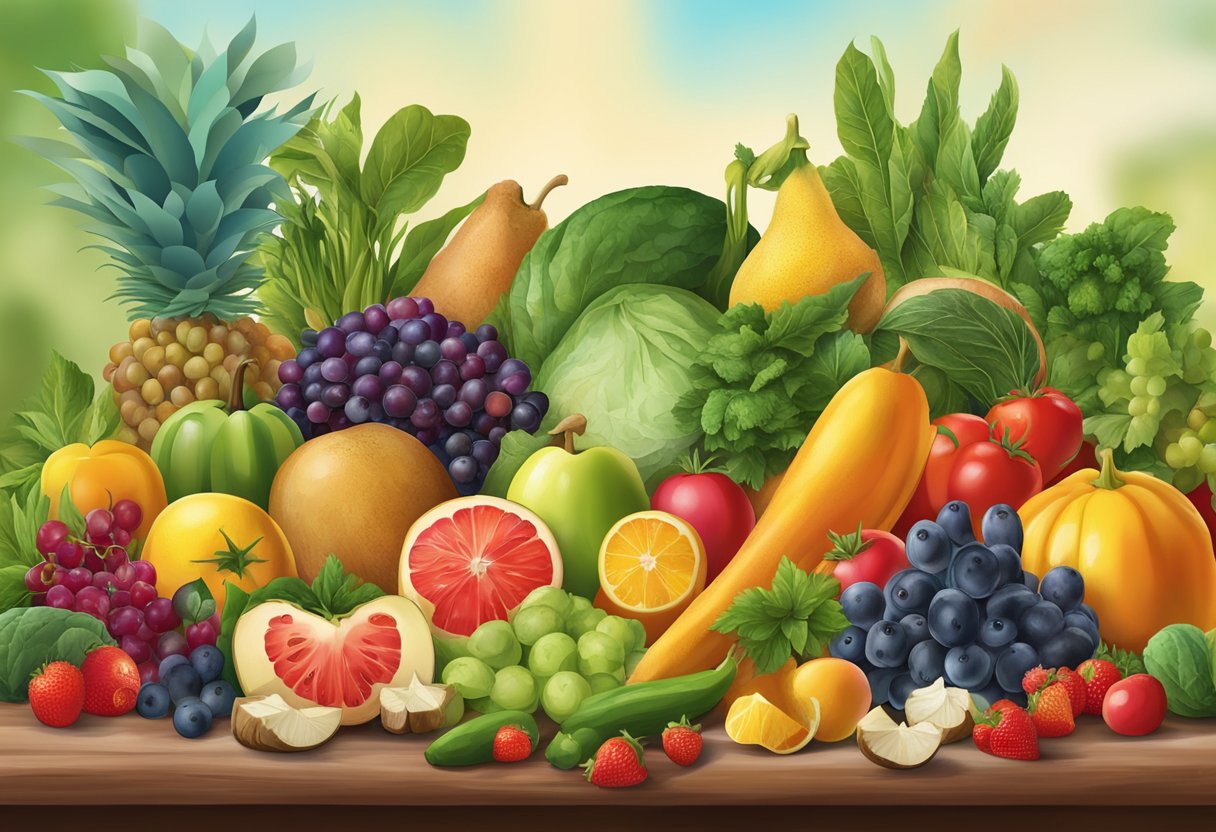
As people increasingly seek out healthy eating habits that accommodate gluten-free requirements, the fusion of Mediterranean dietary principles with gluten-free New World foods presents an innovative solution. These foods not only enrich the diet with essential fibers and proteins but also ensure that the intrinsic simplicity and balance of the Mediterranean diet is preserved.
This balance is essential not just for those with dietary restrictions, but for anyone looking to maintain a healthy lifestyle.
Key Takeaways
- New World foods enhance gluten-free Mediterranean diets with additional nutrients.
- The introduction of these foods upholds the Mediterranean diet’s balance while accommodating gluten-free needs.
- A gluten-free Mediterranean diet supports healthy eating by offering diverse, nutritionally rich options.
Table of Contents
Understanding Celiac Disease and Gluten Sensitivity
Recognizing the differences between celiac disease and non-celiac gluten sensitivity is crucial, as is understanding their related conditions. Awareness also extends to diagnostic procedures and effective management, including the impact of a Mediterranean diet free from gluten.
Overview of Celiac Disease
Celiac disease is a serious autoimmune disorder where the ingestion of gluten leads to damage in the small intestine. When people with celiac disease eat gluten—a protein found in wheat, rye, and barley—their body mounts an immune response that attacks the small intestine. These attacks lead to damage on the villi, small fingerlike projections that line the small intestine, which can result in villous atrophy. The damage prevents the absorption of some nutrients (malabsorption), leading to conditions like anemia and osteoporosis.
Non-Celiac Gluten Sensitivity
Non-celiac gluten sensitivity (NCGS) is a condition where individuals experience symptoms similar to those of celiac disease, which improves when following a gluten-free diet, despite not having celiac disease. Symptoms may include bloating, diarrhea, and abdominal pain.
Dermatitis Herpetiformis and Gluten Ataxia
- Dermatitis Herpetiformis: A chronic skin condition characterized by blisters filled with a watery fluid, it is also linked to gluten ingestion.
- Gluten Ataxia: An autoimmune disorder affecting certain nerve tissues and causing problems with muscle control and voluntary muscle movement.
Associated Conditions and Symptoms
People with gluten-related disorders may develop a variety of symptoms and associated conditions, such as:
- Digestive issues (e.g., bloating, diarrhea)
- Deficiencies in calcium and zinc
- Weight loss or weight gain
- Neurological conditions (e.g., gluten ataxia)
- Dermatological conditions (e.g., dermatitis herpetiformis)
Diagnosis and Management
Diagnosis typically involves:
- Blood tests looking for specific antibodies
- Confirmation with an endoscopic biopsy.
Management of these conditions often requires a strict, lifelong gluten-free diet and regular consultation with a registered dietitian. Adherence to a Mediterranean diet minus gluten-containing foods can contribute to health benefits and assist in symptom management.
Risks of Gluten Exposure
For individuals with celiac disease or non-celiac gluten sensitivity, ingesting gluten, even in minute amounts from cross-contamination, can provoke symptoms and intestinal damage. It is important to avoid any gluten-containing foods to minimize the risk of adverse health effects.
Mediterranean Diet Fundamentals
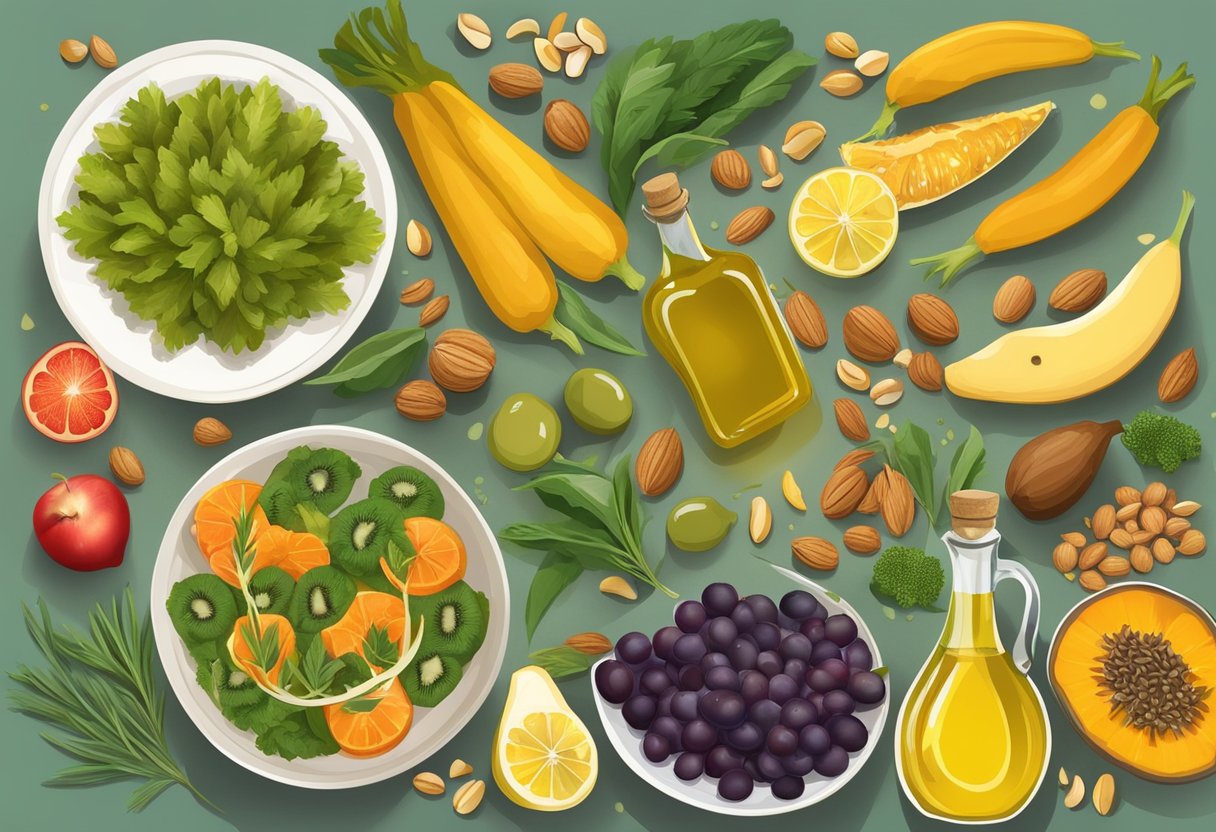
The Mediterranean diet emphasizes the consumption of a diverse array of nutrient-dense foods that are traditionally eaten in countries bordering the Mediterranean Sea. The integration of gluten-free options within this diet enhances its accessibility for individuals with celiac disease or gluten sensitivity.
Core Components of the Mediterranean Diet
The Mediterranean diet is rich in:
- Whole grains: Gluten-free options include quinoa, millet, and brown rice.
- Fruits and vegetables: A rainbow of produce provides vitamins, minerals, and fiber.
- Nuts and seeds: Sources of healthy fats and protein.
- Legumes: Such as lentils, chickpeas, and beans, contributing plant-based protein.
- Healthy fats: Primarily from olive oil, known for its monounsaturated fats.
Health Benefits of the Mediterranean Diet
Adhering to the Mediterranean diet has been associated with:
- Reduced risk of heart disease and stroke due to its emphasis on heart-healthy omega-3 fatty acids.
- Lower instances of certain cancers and other conditions linked to chronic inflammation.
- Potential protective effects against cardiovascular diseases through a balance of nutrient-rich foods.
Incorporating Plant-Based Foods
A Mediterranean diet places a strong emphasis on plant-based foods which are:
- Rich in dietary fiber and antioxidants.
- Gluten-free by nature, making them ideal for those with dietary restrictions.
Role of Fish and Poultry
Fish and poultry are important components for their:
- High-quality protein.
- Omega-3 fatty acids, especially from fatty fish like salmon and mackerel, which support cardiovascular health.
Limiting Red Meat and Processed Foods
This diet minimizes the intake of red meat and processed foods, advising:
- Occasional consumption of red meat.
- Avoidance of processed foods which often contain gluten and unhealthy additives.
Gluten-Free Grains and Cereals
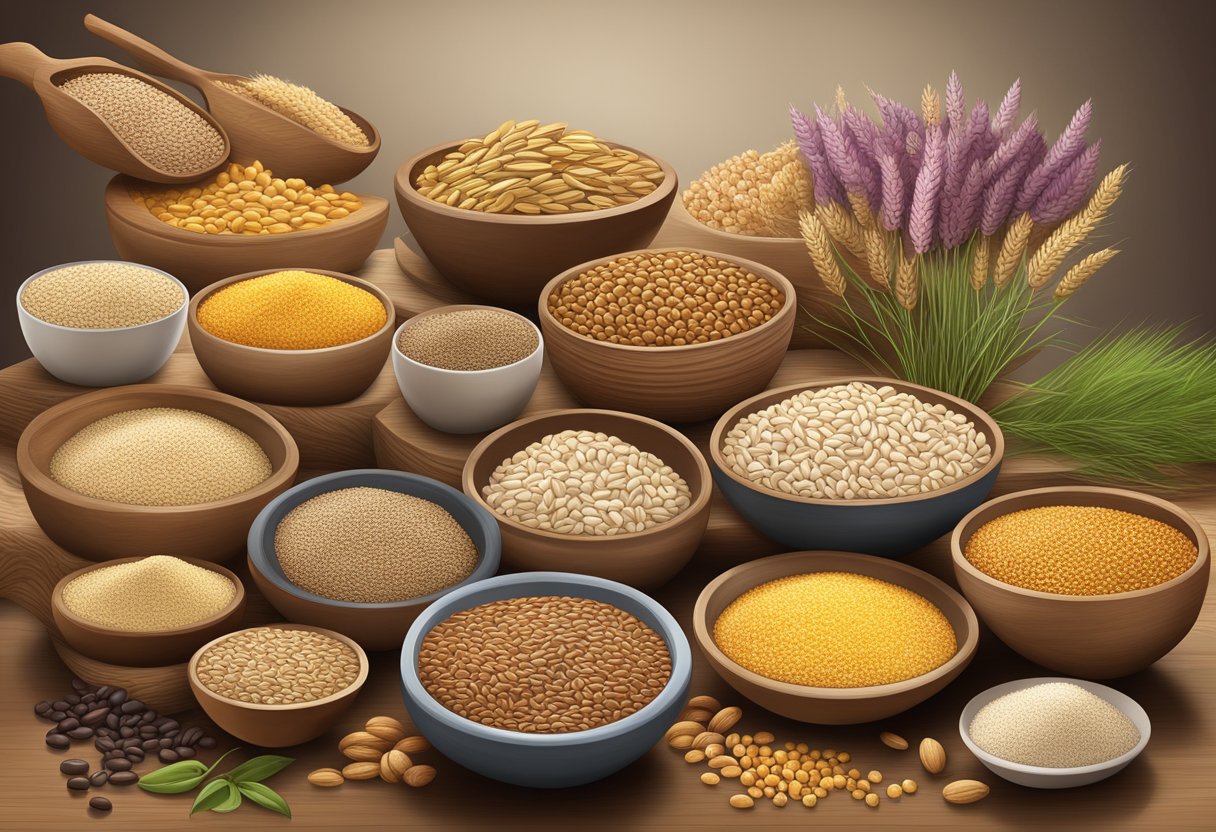
Gluten-free grains and cereals are pivotal for those adhering to a gluten-free Mediterranean diet, offering an array of nutritional benefits and maintaining dietary variety without the inclusion of gluten.
Naturally Gluten-Free Options
Naturally gluten-free grains such as sorghum, rice, and maize (corn) are staples in a Mediterranean diet that’s free of gluten. Sorghum is a versatile grain that can be used in a similar fashion to wheat while being inherently gluten-free. Rice, both brown and white varieties, is a fundamental carbohydrate source that’s compatible with gluten-free diets and can be found in an array of Mediterranean-inspired dishes.
Pseudocereals as Alternatives
Pseudocereals like quinoa, buckwheat, and amaranth offer additional nutrient-dense alternatives to traditional cereals. These pseudocereals are favored for their high protein content and essential amino acids which are particularly beneficial within a gluten-free Mediterranean diet. For instance, quinoa can be seamlessly integrated into salads, while buckwheat can be ground into flour for baking.
Innovative Gluten-Free Substitutes
The incorporation of innovative gluten-free substitutes such as chia and teff brings new flavors and textures to traditional Mediterranean recipes. Chia seeds yield a gel-like substance that can act as a binding agent in gluten-free baking. Teff, although smaller in size, is a hearty grain that provides an earthy flavor and is especially suitable for making gluten-free bread and tortillas.
Understanding Oats and Gluten Contamination
Navigating the role of oats in a gluten-free diet requires careful consideration due to the risk of cross-contamination. While oats themselves do not contain gluten, they are often processed in facilities that handle wheat, barley, or rye, leading to potential gluten contamination. To ensure safety, consumers should specifically look for oats that are certified gluten-free.
Incorporating New World Foods
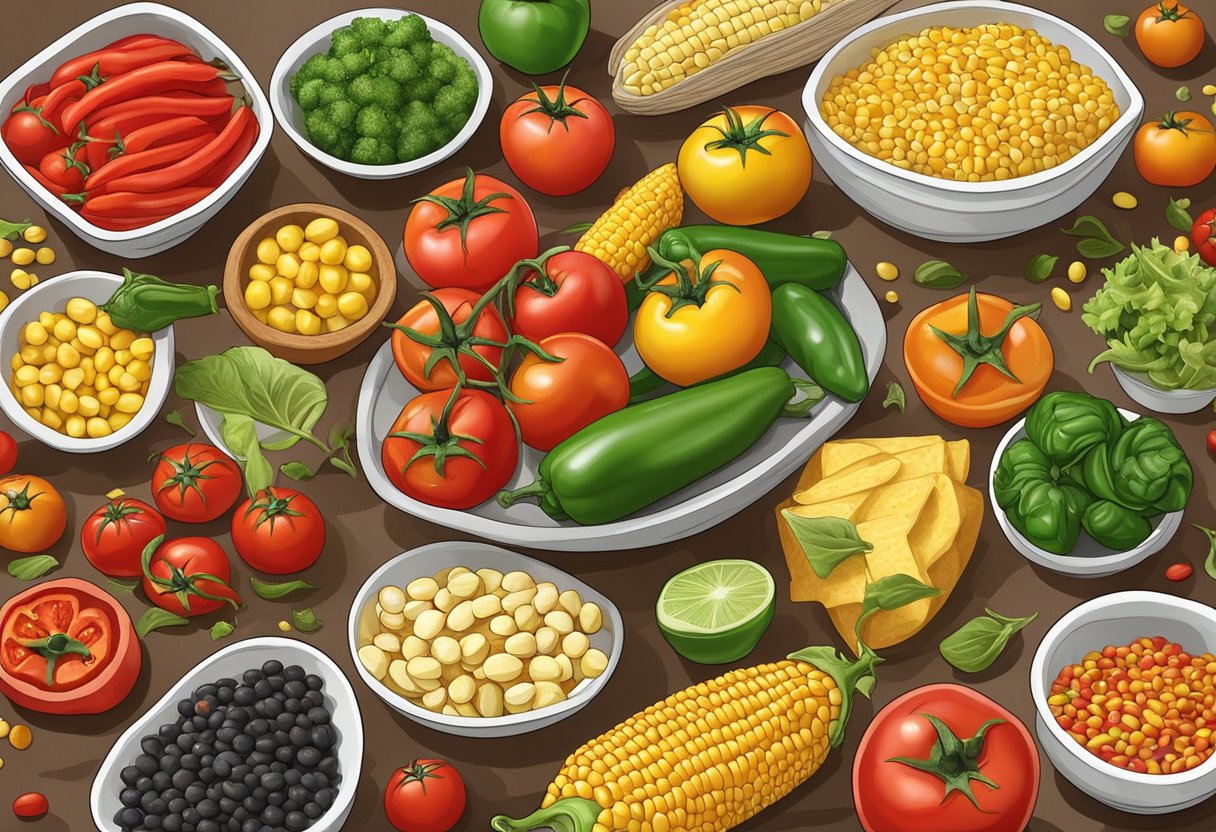
New World grains like quinoa and amaranth introduce diverse textures and flavors to a gluten-free Mediterranean diet, providing nutritional benefits and culinary variety.
Introducing Quinoa to the Diet
Quinoa, once a staple of the Inca civilization, is now a celebrated addition to the gluten-free Mediterranean diet. It’s a complete protein, offering all nine essential amino acids, making it a superb substitute for traditional grains. Quinoa can be used in salads, as a base for stuffings, or simply as a nutritious side dish.
Exploring Amaranth and Chia
Amaranth and chia seeds, other New World ingredients, are both lauded for their impressive nutritional profiles. Amaranth is rich in fiber and protein, and like quinoa, it’s a pseudocereal that’s naturally gluten-free. Chia seeds are loaded with omega-3 fatty acids and fiber. They work well in gluten-free baking, as thickening agents in soups and puddings, or sprinkled over yoghurt for a nutrient boost.
Benefits of Teff and Other Grains
Teff is a small but mighty grain packed with iron, calcium, and fiber. Ideal for baking, it brings an earthy flavor to bread and muffins. Sorghum, another gluten-free grain, is versatile and can be popped like popcorn, cooked into porridge, or used in grain bowls. These grains enhance the variety within a gluten-free Mediterranean diet without compromising on taste or nutrition.
Mediterranean Diet Meal Plan
A Mediterranean diet meal plan focusing on gluten-free foods emphasizes the intake of healthy fats such as olive oil, seeds, and nuts. Whole-food, plant-based meals are central, with these New World grains serving as satisfying, gluten-free substitutes that are seamlessly integrated into daily eating habits.
- Monday:
- Breakfast: Quinoa porridge with fresh berries.
- Lunch: Mixed green salad with grilled chicken and amaranth.
- Dinner: Stuffed bell peppers with teff and vegetable medley.
Adapting Traditional Recipes
Transforming classic Mediterranean recipes to include gluten-free grains is an exciting adventure for the home cook. Swapping out couscous for quinoa, replacing wheat flour with teff in bread, and adding amaranth to soups can create familiar yet novel dining experiences. Such substitutions allow traditional dishes to remain within dietary restrictions while embracing new flavors.
Nutritional Considerations
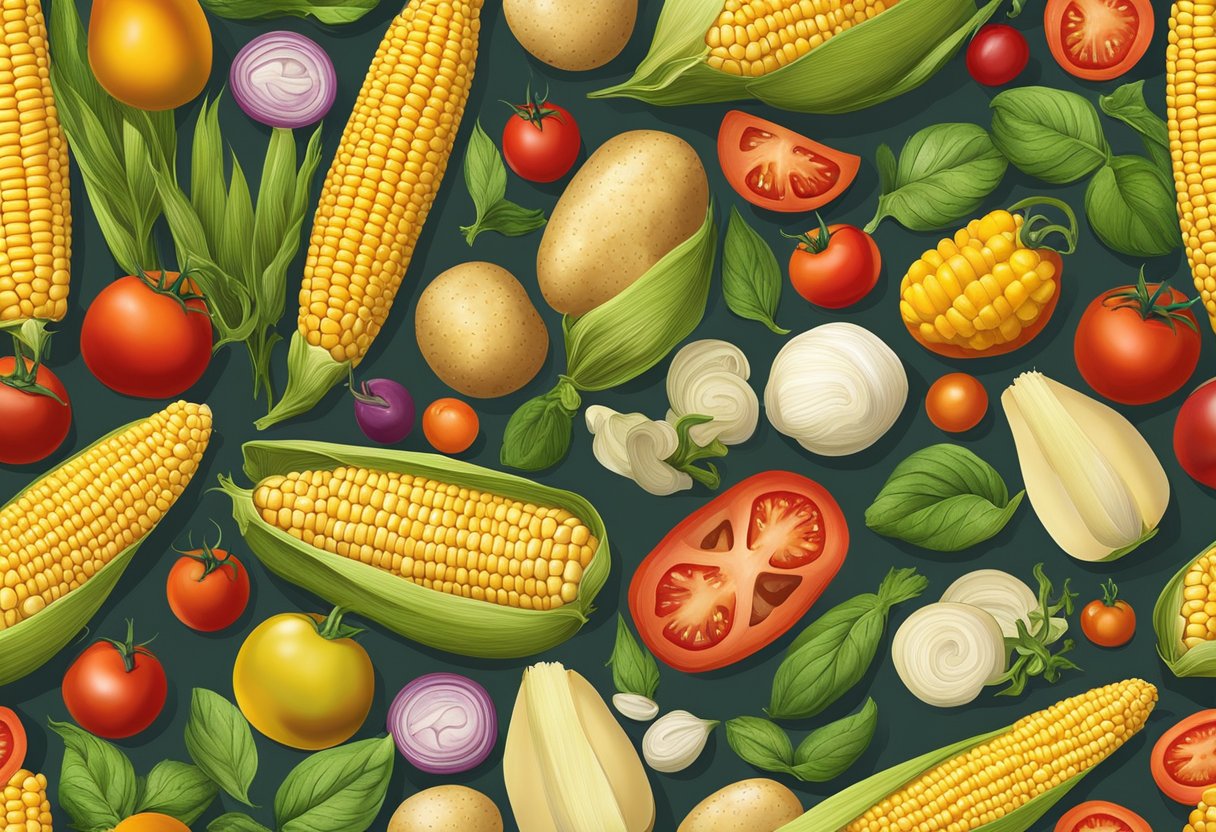
When incorporating New World foods into a gluten-free Mediterranean diet, it’s crucial to consider their nutritional profile and the diet’s overall balance. The aim is to ensure adequate intake of key nutrients while adhering to gluten-free requirements.
Maintaining Balanced Nutrition
A gluten-free Mediterranean diet should be varied, incorporating whole grains like quinoa and millet to provide dietary fiber. These grains help maintain a feeling of fullness and support digestive health. Including a wide range of vegetables and fruits ensures a broad spectrum of vitamins and antioxidants, crucial for overall well-being.
Monitoring Vitamins and Minerals
Individuals on this diet must pay close attention to certain vitamins and minerals to avoid deficiencies. Iron, folic acid, calcium, and zinc levels can be compromised in gluten-free diets. Legumes, nuts, and seeds, as well as leafy greens, should be regular parts of meals to secure these nutrients.
Diet and Metabolic Syndrome
The gluten-free Mediterranean diet emphasizes foods that may help maintain healthy cholesterol levels and blood pressure, components of metabolic syndrome. The inclusion of olive oil, nuts, and fatty fish contributes to a balance of healthy fats, important for both cardiovascular health and glucose regulation.
Weight Management Strategies
For effective weight management, caloric intake needs to be balanced with physical activity. The diet’s focus on plant-based foods and lean proteins, while limiting processed foods and sweets, naturally aids in maintaining a healthy weight. Regular monitoring and adjusting portion sizes based on activity levels are important strategies.
Lifestyle and Environmental Impact

The integration of New World foods into the gluten-free Mediterranean diet has far-reaching implications, from enhancing sustainable agricultural practices to influencing cultural eating habits and promoting healthier lifestyles.
Sustainable Agriculture and Foods
Sustainable agriculture is pivotal for maintaining the health of the Mediterranean ecosystem. Introducing crops like quinoa and amaranth, which are naturally gluten-free and adaptable to various climates, supports biodiversity and soil health. These New World foods require less water than traditional gluten-containing grains, hence they’re aligned with efforts to conserve resources in the Mediterranean region.
Cultural Integration of Eating Habits
The Mediterranean diet is deeply rooted in the cultures of Italian, Greek, and other Mediterranean populations. As gluten-free alternatives from the New World make inroads into this region, there is a delicate balance between preserving traditions and embracing new influences. Cultural integration is achieved when imported crops are used in traditional dishes, providing gluten-free options without losing authentic flavors.
Healthy Eating and Lifestyle Choices
A gluten-free Mediterranean diet encourages a focus on plant-based foods, which are tied to numerous health benefits. Reducing reliance on grains that contain glutenin and gliadin peptides, Mediterranean populations can maintain their culture of healthy eating while accommodating those with gluten sensitivities. This shift has the potential to improve the quality of life and promote longevity.
Evaluating Food Origins and Production
Consumers are increasingly interested in the origins of their food and its environmental impact. By evaluating the production methods of gluten-free New World foods, individuals can make informed choices that favor sustainable practices. This not only fosters healthy eating habits but also supports agriculture that is conscientious towards the environment of the Mediterranean Sea and beyond.
Frequently Asked Questions

This section aims to resolve common queries regarding the incorporation of New World foods into a gluten-free Mediterranean diet.
What are some staple ingredients of a gluten-free Mediterranean diet?
Staple ingredients for a gluten-free Mediterranean diet include fruits, vegetables, lean proteins like chicken, and fish, as well as healthy fats found in nuts, seeds, and olive oil.
How can someone with a gluten intolerance adapt traditional Mediterranean meals?
Individuals with gluten intolerance can adapt traditional Mediterranean dishes by using gluten-free substitutes for common grains. They can utilize gluten-free pasta, breads, and flours, or choose naturally gluten-free options like quinoa, rice, and oats.
Which gluten-free grains fit well within the Mediterranean diet framework?
Gluten-free grains that fit within the Mediterranean diet include quinoa, rice, oats, millet, amaranth, teff, and buckwheat, which provide versatile options for various recipes and meals.
Can you suggest some gluten-free, dairy-free options within the Mediterranean diet?
Gluten-free, dairy-free options in a Mediterranean diet involve using plant-based milks and cheese alternatives, focusing on legumes, nuts, seeds, fruits, vegetables, and selecting seafood or lean meats for protein.
What are some quick and easy gluten-free Mediterranean breakfast ideas?
For a quick gluten-free Mediterranean breakfast, individuals can enjoy chopped fruits and nuts with a drizzle of honey or a smoothie made with non-dairy milk, gluten-free oats, and berries.
What is the best way to create a gluten-free Mediterranean diet meal plan?
The creation of a gluten-free Mediterranean diet meal plan should be focused on fresh, whole foods. Planning can be facilitated by using resources such as meal plans and shopping lists provided by the Celiac Disease Foundation and other dietitian-curated guides.



